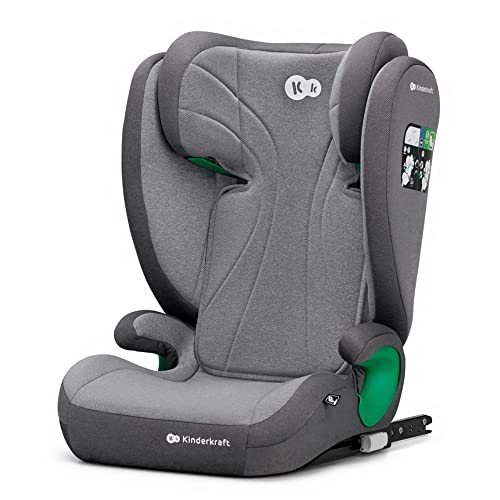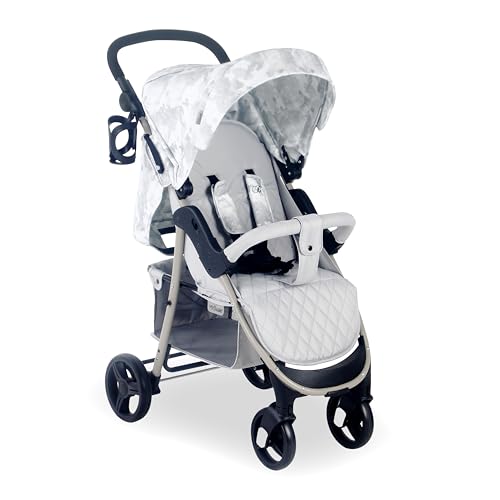5 Motives Pram Vs Pushchair Is Actually A Great Thing
페이지 정보

본문
Pram vs. Pushchair: Understanding the Key Differences
When it comes to transporting infants and young kids, parents frequently find themselves overwhelmed by the various alternatives offered. Amongst these options, prams and pushchairs are 2 of the most typical forms of baby transport. While the terms are frequently utilized interchangeably, each has distinct features and advantages that accommodate diverse parenting needs. In this short article, we will check out the essential differences in between prams and pushchairs, assisting moms and dads make notified decisions about which is best prams matched for their family.

What is a Pram?
A pram, or perambulator, is a type of baby carriage developed primarily for newborns and infants. Prams generally include a completely flat lying position, which is essential for newborns who require to lie flat for spinal advancement. Most prams come geared up with a deep, enclosed body that provides a cozy and protected environment for the baby, often with extra functions such as hoods or covers to shield them from the aspects.

Secret Characteristics of Prams:
- Flat Lying Position: Supports healthy spine development in newborns.
- Enclosed Design: Protects the baby from wind and sunlight.
- Conventional Aesthetic: Often made from products like wicker or fabric, providing a traditional appearance.
- Weight and Bulkiness: Generally much heavier and bulkier than pushchairs.
What is a Pushchair?
A pushchair, also known as a stroller or buggy, is developed for older infants and toddlers who can stay up unassisted. Pushchairs permit several seating positions, consisting of reclining alternatives for naptime. They are usually lighter and more nimble than prams, allowing parents to navigate hectic areas with ease. Lots of pushchairs include adjustable deals with, storage compartments, and can typically be folded for hassle-free transport.
Key Characteristics of Pushchairs:
- Seating Position: Designed for children who can sit up, with various reclining positions.
- Lightweight and Compact: Easier to maneuver and transportation.
- Adaptability: Many models are convertibles or can accommodate safety seat.
- Storage Features: Often include baskets for bring diaper bags, toys, etc.
Secret Differences Between Prams and Pushchairs
Below is a comparative table highlighting the critical differences between prams and pushchairs.
| Feature | Pram | Pushchair |
|---|---|---|
| Target Age | Newborns to 6 months (flat position required) | 6 months to toddler age (sitting unassisted) |
| Design | Enclosed, standard design | Open, modern style |
| Weight | Heavier, bulkier | Lighter, more compact |
| Seating Options | Flat just | Multiple positions including reclining |
| Manoeuvrability | Less maneuverable due to weight | Highly maneuverable |
| Storage Space | Restricted | Generous below baskets |
Picking Between a Pram and a Pushchair
Consideration Factors:
- Age of the Child: Choose a double pushchair pram and pushchair (from the halberg-young-2.federatedjournals.com blog) for newborns and a pushchair for older babies and young children.
- Meant Use: If you prepare to do a lot of walking or browsing city streets, think about a model that fits your way of life.
- Area: Assess the readily available storage in your house or vehicle and how compactly a design can fold.
- Budget: Consider the cost variety, as prams and pushchairs can differ extensively in cost.
- Features: Look for additional features that might be useful for your everyday life, such as cup holders, canopies, or easy folding mechanisms.
Benefits and Disadvantages
Advantages of Prams
- Ideal for Newborns: Encourages healthy spinal column advancement.
- Comfy Space: Provides a comfortable environment for babies.
Downsides of Prams
- Weight: Heavier and bulkier, making them less practical for daily use.
- Minimal Use Time: Generally useful only for the first 6 months.
Benefits of Pushchairs
- Flexibility: Suitable for longer periods as the kid grows.
- Light-weight Design: Easier to carry and navigate.
Disadvantages of Pushchairs
- Not Suitable for Newborns: Requires the child to be able to stay up unassisted.
- Less Protective: Generally more exposed than a pram.
Often Asked Questions (FAQs)
1. Can I utilize a pushchair for a newborn?
Many pushchairs are not developed for newborns; however, lots of designs include baby safety seat adapters. Some pushchairs shop provide a completely reclining seat alternative that might appropriate for babies, but ensure the maker verifies it's safe.
2. Which is better for travel?
cheap pushchairs are normally preferred for travel due to their lightweight and compact nature. They can typically be folded easily for transportation on public transportation and fit more readily in vehicle trunks.
3. How long can I use a pram?
Prams are generally ideal for infants until they reach around 6 months of age or when they can support themselves in a seated position.
4. Are there hybrid designs available?
Yes, many makers produce hybrid designs that can be transformed from a pram to a pushchair depending upon the kid's development stage.
5. What should I look for when buying a pram or pushchair?
When buying, consider security features, ease of use, toughness, weight, and storage. It's likewise a good idea to evaluate various models for convenience before making a choice.
Choosing between a pram uk and a pushchair eventually depends upon the age of your child and your way of life choices. Understanding their differences helps moms and dads make notified options that deal with their family's requirements. Moms and dads can enjoy the journey of parenthood by guaranteeing that their kid's comfort and security are constantly prioritized, while likewise considering their own benefit and design.
- 이전글"A Guide To Upvc Doors With Windows In 2024 25.09.16
- 다음글Guide To Upvc Panel Refurbishment: The Intermediate Guide Towards Upvc Panel Refurbishment 25.09.16
댓글목록
등록된 댓글이 없습니다.


